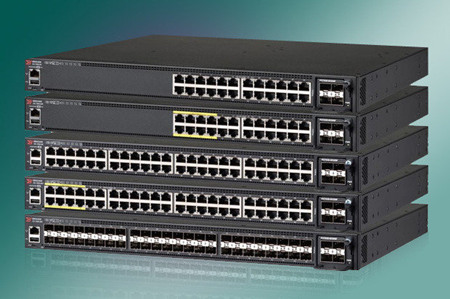Why Stackable Switches Are More Favored?
来源:互联网 发布:模拟电路软件汉化版 编辑:程序博客网 时间:2024/06/12 16:19
Up to now, there are three types of switching solutions: standalone, stacked, and chassis. According to researches, stackableGigabit switches have been warmly welcomed by large data center, enterprise network and home networking over the years. Lots of Ethernet users intend to choose a stacked switching solution rather than standalone and chassis switching solutions. So what are the reasons behind this kind of preference? This article would provide a satisfied answer for you.
Simplified management is the paramount advantage for all stacking. Before stacking came along, you had to attach multiple switches together and configure them separately by logging in with a different IP address one by one. As you may know or can imagine, this was a super tedious process. When stacking switches, they all share the same IP address and can be configured as one unit. Instead of looking like multiple separate switches, the solution actually looks like one switch with a larger amount of ports. In the following part, we would further analyze the merits of stackable switching solution.

In this text, we would mainly demonstrate the benefits of stacking switches from the aspect of simplicity, scalability, and flexibility.
For environments where a combination of different port speed and media types are needed, such as a mix of copper gigabit Ethernet and fiber gigabit or 10 gigabit, stackable switches make this possible without needed independent switches or use of a large, perhaps oversized, chassis. We can add ports as we need them by simply purchasing another switch and adding it to the stack.

We can stack up to nine 3750-X switches and have 432 x 10/100/1000 ports and 18 x 10 Gbps ports. We can do this using only 9RU’s of rack space. A chassis would require over double the rack space to achieve this access port density. This makes these switches very popular as top-of-rack switches in the data center.
For resiliency, devices like servers, downstream switches, or other important devices can be connected via EtherChannel to the stack, with the ports in the EtherChannel spread across multiple switches in the stack. This setup allows for a failure of a switch in the stack with minimal forwarding interruption and any connected hosts still active with only a performance loss.
A stack of Ethernet managed switches appears to the operator and the rest of the network as one single switch, making it easier to manage and configure. Newer switch models add stateful failover capability, providing similar behavior as a chassis with dual supervisors in case of a failure or the need to update software on the stack.
This article mainly explained the reasons of people’s preference for stacking network switches from three points—simplicity, scalability, and flexibility. When you are looking for a stacking switch, there are some questions you need to consider. How many switches can go into a stack? How far apart can they be stacked? What is the speed of the backplane? What technologies do you need and what can the switch be stacked with? All of these points attach great importance to your stacking switches. And thus, please take a careful consideration before you buy a stacking switch.
- Why Stackable Switches Are More Favored?
- Why are MVC & TDD not employed more in game architecture?
- Why are you crying?
- Why are numbers beautiful?
- Why are you smiling?
- why software are important
- Why Singletons are Evil
- Why are you always smiling?
- Why are leap years used?
- Why are many people busy?
- Why Vector Clocks are Easy
- Why Vector Clocks are Easy
- Why Vector Clocks Are Hard
- why are U rejecting me
- why-they-are-using-vi
- Are We More Connected or More Alone?
- Are @autoreleasepool Blocks More Efficient?
- 7 More Reasons Why Web Apps Fail
- linux c编程操作数据库(sqlite3应用)
- LeetCode_24_Swap Nodes in Pairs
- Android 开发资料便签
- 我如何在5台虚拟机上整合hadoop生态圈的各种组件(随笔)
- 【python】 string.puntuation符号匹配原则
- Why Stackable Switches Are More Favored?
- Runloop 探秘(二)—— NSTimer 计时不准?
- CentOS7安装Maven编译pom所出的异常
- 欢迎使用CSDN-markdown编辑器
- C++编译的若干问题
- Java学习小结
- 服务器常用的状态码
- SpringMVC如何绑定数据,绑定完数据之后如何确保我们得到的数据的正确性
- CCF201312-1


